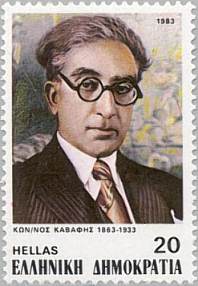 Of all the poets who are connected with Liverpool, perhaps the greatest is C.P.Cavafy, a twentieth century Greek cultural icon, although he was born in Alexandria. From a wealthy family, his father had business interests in Egypt, London and Liverpool. After his father’s death, Cavafy’s mother brought him in 1872 at the age of nine to Liverpool where he spent part of his childhood being educated. He lived first in Balmoral Road, then when the family firm crashed, he lived in poorer circumstances in Huskisson Street.
Of all the poets who are connected with Liverpool, perhaps the greatest is C.P.Cavafy, a twentieth century Greek cultural icon, although he was born in Alexandria. From a wealthy family, his father had business interests in Egypt, London and Liverpool. After his father’s death, Cavafy’s mother brought him in 1872 at the age of nine to Liverpool where he spent part of his childhood being educated. He lived first in Balmoral Road, then when the family firm crashed, he lived in poorer circumstances in Huskisson Street.
One of his most famous poems is The City which is reproduced below. Since Cavafy had roots in Alexandria, Greece, Constantinople (Istanbul), Paris and London, his city -although most influenced by Alexandria where he was known as ‘the poet of the city’ – his city in the poem could be any city.
The City
You said, “I will go to another land, I will go to another sea.
Another city will be found, better than this.
Every effort of mine is condemned by fate;
and my heart is — like a corpse — buried.
How long in this wasteland will my mind remain.
Wherever I turn my eyes, wherever I may look
I see the black ruins of my life here,
where I spent so many years, and ruined and wasted.”
New lands you will not find, you will not find other seas.
The city will follow you. You will roam the same
streets. And you will age in the same neighborhoods;
in these same houses you will grow gray.
Always you will arrive in this city. To another land — do not hope —
there is no ship for you, there is no road.
As you have ruined your life here
in this little corner, you have destroyed it in the whole world.
Sir Sean Connery backed by music of Vangelis go to make for a sugary sweet version of Ithaca; again, it seems more than about a particular place or set of myths. Coming from a great seaport such as Liverpool, it resonates the more.



